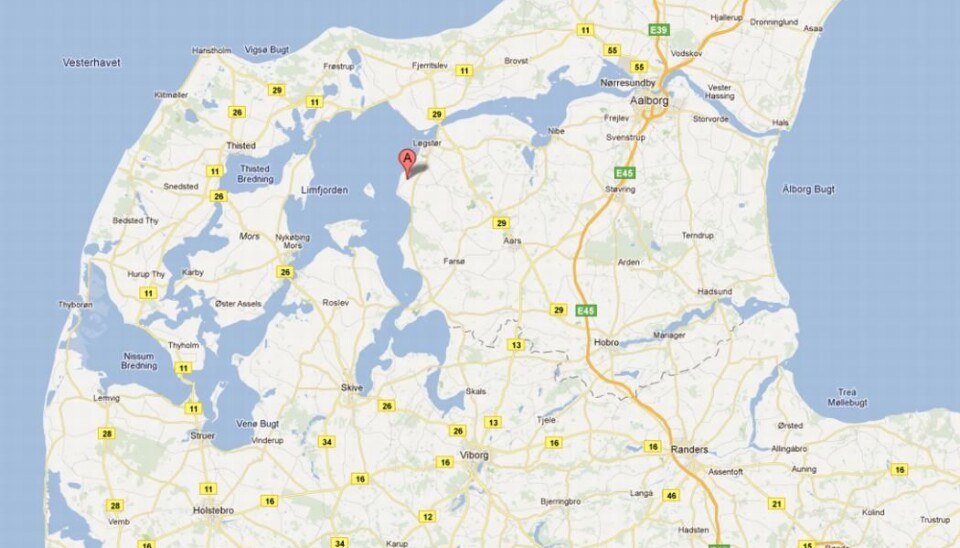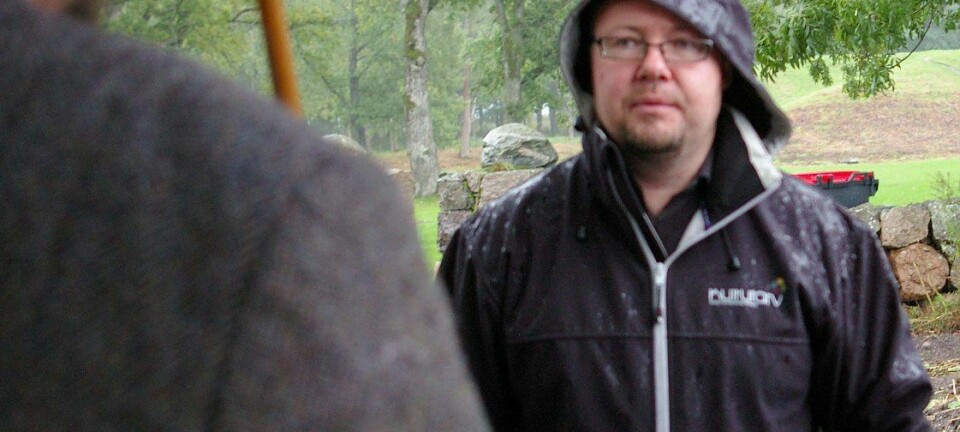
Unique find at Viking burial place
Archaelogists have discovered a unique horseman’s grave exceeding 100m2 at a Viking burial place in Denmark. Several other aristocrats’ graves from the time of Harald Bluetooth were also found.
One day in 1951, when a farmer was passing a road construction site at Næsby in the north of Denmark’s Jutland peninsula, he had to take a second look: at his feet was what seemed to be an antique grave that the construction machines were tearing to pieces.
The quick-witted farmer immediately contacted the local museum, which soon got the construction work stopped. Archaeologists, who replaced the construction gang, soon discovered that the nearly destroyed grave belonged to an aristocratic horseman from the Viking age. They found weapons, harnesses and other effects next to the horseman.
Unknown rider not just anybody
Fifty years passed before anyone was allowed to excavate the grave again, and another decade went by before a completely unique find underlined how important the farmer’s alertness had been.
It turned out that round the impressive horseman’s grave – which was made up of a burial mound partly enclosed by a massive circle of stones – had been a high, square fence. The fence had at least one entrance and had probably been richly decorated. In total, this rich man’s burial site exceeded 100 m2.
“This is a unique find,” says Bjarne Henning Nielsen, an archaeologist and the assistant curator at Vesthimmerlands Museum. He was responsible for excavating the whole of the aristocratic burial site, which has 25 graves, but none of the other graves is as large or lavish as the horseman’s.
“This is the first time ever that we’ve seen a grave like this, and so we have nothing to compare it with,” says Nielsen. “But one thing is certain: the person lying here is not just anybody.”
Horseman had high status with Harald Bluetooth
Nielsen and his colleagues have found it difficult to date the burial site exactly, as burial traditions changed at about the time when these people were buried, in about 950.
But it is certain that the burial place was established at a time in Danish history when Harald Bluetooth was assuming a great deal of power in northern parts of the Jutland peninsula – he brutally drove out the ordinary people living in the area when he built the Viking castle at Aggersborg, close to the Limfjord, and gave himself the title of king. The only people not driven out were the type of people now lying in this burial place.
“We don’t know who they are, but we do know they must have been aristocratic,” says Nielsen. “We certainly believe they had close relations with Harald Bluetooth, as they were allowed to remain in the area and were later given lavish funerals.”
The horseman’s grave was so extravagant that it indicates he had very high status with Harald Bluetooth. Another lavish grave, though slightly less luxurious, belonged to a man that the archaeologists have nicknamed ‘the axe-man’.
“At the same burial site we found a man who was buried alongside an axe,” says Nielsen. “He also lay in a large grave, but this was surrounded by an earth-filled ditch that we only know from finds in Norway.”
The assistant curator believes the unknown horseman and the axe-man knew each other quite well and were buried at the same site at more or less the same time.
The rest of the burial site probably contains several generations of the same family, from grandmother to grandchildren.
Full of mystery
The burial site has been the cause of conjecture for several reasons.
• The women’s clothes differ in appearance from those found elsewhere in the country at about the same time. Among other items, they have beautiful armhole ornaments, seen on Frankish-Byzantine costumes but not on woollen Nordic clothes.
• The women’s jewellery is much more modest than usual. They wore only a few glass beads and a simple piece of jewellery around their necks, unlike in earlier times, when they had large breast jewellery with heavy hanging chains.
• The axe-man’s grave has a form not seen in Denmark earlier, but known from Norway.
• The horseman’s grave has a form never seen in Denmark before and the source of inspiration is unknown.
• Although Christianity had probably been introduced to Denmark at about this time, the people buried at the site still have items in their graves that traditionally accompanied them to the grave in the Viking age – such as weapons, tools, harnesses and jewels.
• The carriage-like coffins of the women, the horseman’s horse and another buried man’s boat show that several of the people buried here were accompanied by a form of transport, but it is unknown whether this was due to a belief that the dead had to transport themselves to a certain destination in the afterlife – and, if so, where.
The women’s costumes and jewellery in particular indicate that the people buried here had new and different norms than previously, while the jewels and tools indicate their adherence to the traditional Asa faith, which the Vikings followed before Christianity reached Denmark.
According to Nielsen, one explanation for this mystery may be that the people buried here had converted to Christianity but still retained their old ways – either because they were unsure what happened when they met ‘heaven’ or ‘hell’, or, in the assistant curator’s words, “Rich people would always have a need to show other people they are rich, also in heaven.”
Read the article in Danish at videnskab.dk
Translated by: Michael de Laine








